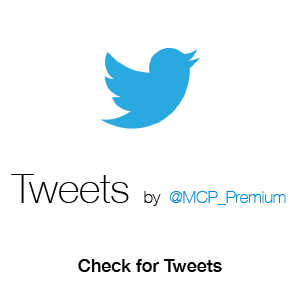Key events this week – US non-farm payrolls, ISM surveys, Fed speeches, BoE policy meeting
Recap from last week: Central banks wary of trade risks.
Before the US tariff announcement late last week, central banks wrestled with the potential economic fallout of tariffs and a trade war, particularly the impact on inflation, growth, and the future direction of interest rates. The emphasis was slightly different among the decisions last week.
The Bank of Canada (BoC) addressed the challenge most directly, given its close trading relationship with the US. The BoC cut rates again – continuing to support growth while the economy remains in “excess capacity” and inflation is stable around the 2% level. Given the high degree of uncertainty in the outlook, the BoC held off on forward guidance. The BoC Governor expressed clear concern about the downside risks to the Canadian economy posed by tariffs and a potential trade war, noting that such a scenario would “badly hurt economic activity in Canada” while simultaneously placing “direct upward pressure on inflation”. The Bank provided a frank assessment of its position in such circumstances:
However, with a single instrument—our policy interest rate—we can’t lean against weaker output and higher inflation at the same time. Source: BoC Press Conf 29 Jan 2025
The ECB cut its deposit facility rate by a further 25bps. The disinflation process remains on track however, inflation is expected to remain around the current level in the near term. Euro area growth faces several headwinds, and the latest prelim Q4 GDP result showed growth stalling at 0% in the quarter. “Trade frictions” were highlighted as a key uncertainty for Euro area inflation, trade, and growth. Guidance remained limited;
And for those who would like to have this solid forward guidance, it would be totally unrealistic to do anything of that nature, simply because we are facing significant and probably rising uncertainty at the moment. Source: ECB Press Conf, 30 Jan 2025
Discussion focused on the path of rate cuts from here and the ‘neutral’ rate. An ECB staff paper is to be released at the end of this week with an update on the neutral rate/range. ECB President Lagarde noted that this paper “will help us determine how close we are (to neutral) and what our monetary policy stance should be”.
The FOMC stayed on hold as expected. The message from the FOMC is that the US economy is in a good place overall and policy settings are well positioned to make further progress on inflation. The policy stance is “less restrictive” than it has been, and the Committee is not in a hurry to adjust the policy stance. Future rate cuts will depend on further progress on inflation and Fed Chair Powell was clear that the FOMC needs to specifically see the 12-month inflation rate come down (or weakness in labor market conditions). The outlook for further progress on inflation was optimistic, given the development of slowing housing inflation. The Committee is firmly in wait-and-see mode on the effect of and its response to, the domestic policy changes to be enacted by the new Trump administration – including trade, immigration, fiscal, and regulatory policy.
We’ll patiently watch and understand and kind of not be in a hurry to get to a place of understanding what our policy response should be until we see how it plays out. Source: FOMC Press Conf, 29 Jan 2025
The Dec US PCE inflation report highlighted the Fed’s point on inflation. After making progress on disinflation over the past two years, progress seemed to have stalled this year. In Dec, the monthly core PCE inflation was slightly softer than expected at +0.16% (expecting +0.19%), however, the annual rate remained at +2.8%. This annual core PCE rate has averaged +2.8% over the last 12 months. To highlight the Fed’s concern, a year ago, the annual core PCE rate was 3.04% – which suggests little progress throughout 2024. This month, there was more progress on slower housing inflation and core goods deflation. The short-term annualized measures of inflation do point to inflation slowing more recently again. However, the issue of seasonality is important – and this is the Fed’s point. For example, last year in Jan 2024, the monthly headline PCE rate reaccelerated to +0.4% while the core PCE rate came in at +0.5% over the month – both were high readings after three months of far more benign results. How the annual inflation data evolves over the next few months, as it cycles over these higher readings during the start of 2024, will be important for shaping the inflation narrative.
US growth came in lower than expected at +2.3% annualized in Q4 (expecting +2.7%). Continued strength in personal consumption expenditure only partially offsets some weakness in fixed investment and slower growth in govt expenditure. The change in private inventories detracted from growth, as private inventories were little changed over the prior quarter. Over the year, US real GDP growth was +2.5% – which was on par with the latest and upgraded FOMC projection for US growth over the year at the end of 2024.
Outlook for the week ahead; US non-farm payrolls, the BoE, and elevated headline risk from tariffs.
Markets will likely continue to digest the tariff announcements from late last week – and there remains potential for headline risk.
US data will be focused on the comprehensive update on the US labor market in Jan and the ISM surveys. The Bank of England also meets this week. Outside of the US, data will focus on important Euro area inflation, the Canadian labour market, and the broader update from the S&P global PMIs for Jan.
Key factors to watch this week;
US Labor market data for Jan will be important for providing the FOMC with a general gauge of labour market conditions at the start of the year.
- US non-farm payrolls are expected to increase by +154k in Jan, down from +256k in Dec. The final annual benchmark revision for the establishment survey will be issued in the Jan release by the BLS. The prelim release showed a -818k downward revision to non-farm payrolls over the year.
- The unemployment rate is expected to stay unchanged at 4.1%. Average weekly earnings are expected to increase by +0.3% over the month and slow to +3.8% over the year in Jan.
- The JOLTS survey for Dec (lags by one month) is expected to show job openings slow to 7.88m in Dec, from 8.1m in Nov.
- The US ISM manufacturing and services PMIs for Jan will provide a gauge of growth momentum in private sector activity. The ISM manufacturing PMI is expected to be little changed remaining in slight contraction at 49.3, while the headline services PMI is expected to show continued moderate expansion at 54.2.
- Fed speeches are back this week. Some highlights; Fed Vice Chair Jefferson will speak on the economic outlook and monetary policy. Governor Waller will give a speech on payments but may recap the Fed meeting last week. The latest Fed Loan Officer survey will also be released this week.
Central banks;
- The BoE will meet this week for the first time in 2025 and is expected to cut rates by 25bps. The BoE kept rates unchanged at the last meeting in a closer 6-3 vote. The window seemed to be narrowing for the BoE with domestic inflation resolving slowly amid a weakening growth backdrop. More recent inflation data has shown underlying inflation easing further while the unemployment rate has edged higher.
Outside of the US, data will be important for the central bank policy outlook;
- The Euro area prelim CPI for Jan is expected to stay unchanged at +2.4% over the year versus +2.4% in Dec. The core CPI for Jan is expected to edge lower to +2.6% over the year, from +2.7% in Dec.
- In Canada, employment growth is expected to slow to +26k from +90k in Dec. The unemployment rate is expected to edge higher to 6.8% from 6.7%.
- The NZ labour market data for Q4 is expected to show a further fall in employment in Q4 of -0.2%, after -0.5% in Q3. The unemployment rate is expected to rise to 5.1% in Q4 from 4.8% in Q3. The RBNZ meets for the first time this year on 19 Feb.
- The broader suite of global PMIs for Jan will be released this week.
This week, the US Treasury will auction and/or settle approx. $490bn in ST Bills raising approx. $45bn in new money.
QT this week: Approx $12.7bn of ST Bills will mature on the Fed balance sheet and will be reinvested.
The next scheduled update on the US Treasury quarterly financing estimates for Q1 and Q2 will be this week on 3 and 5 Feb 2025. Details are usually located on the US Treasury website here.
More detail (including a calendar of key data releases) is provided in the briefing document – download the pdf below:
Comments and feedback are welcome. Please email me at kim.mofardin@marscapitalpartners.net

